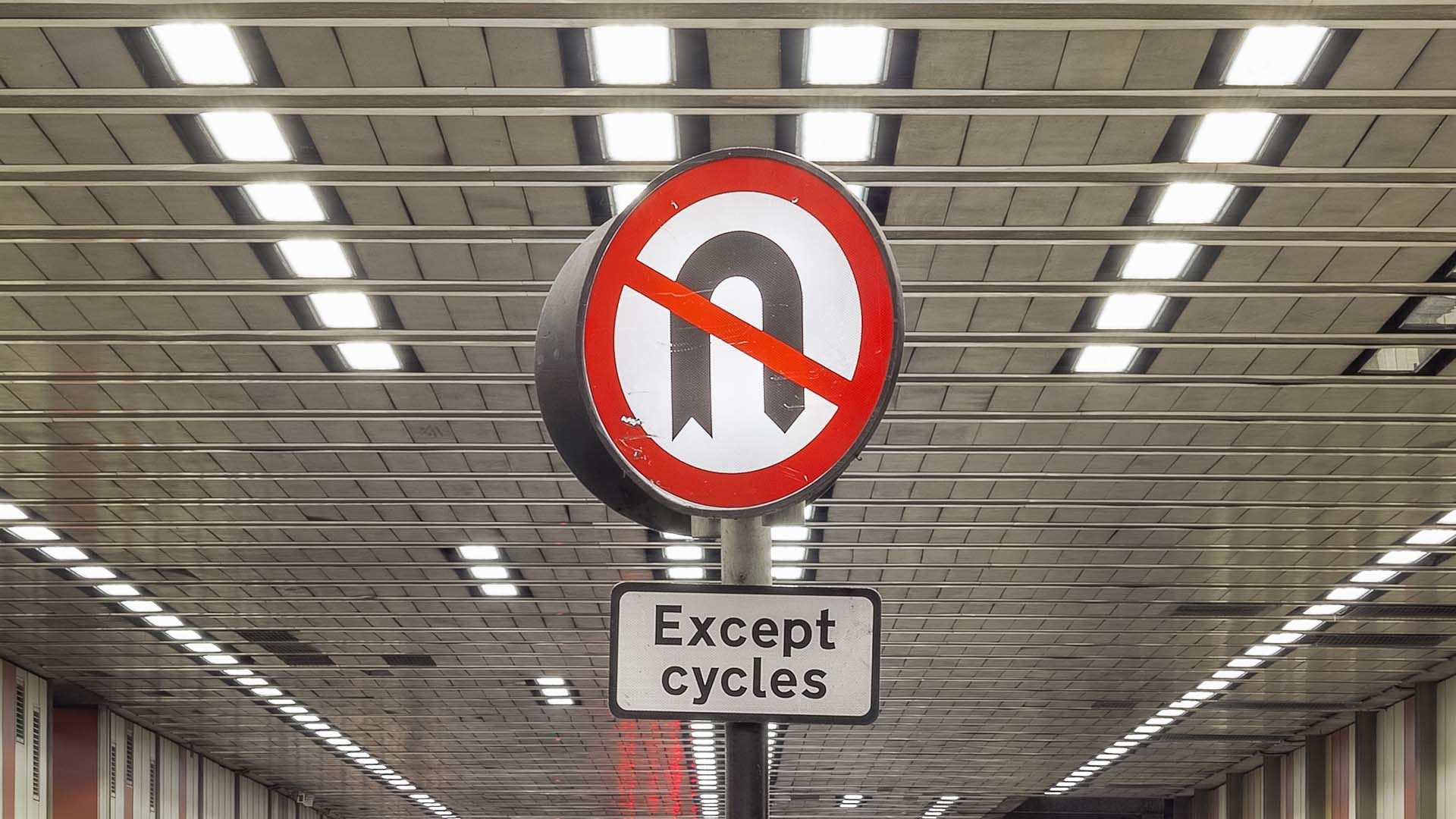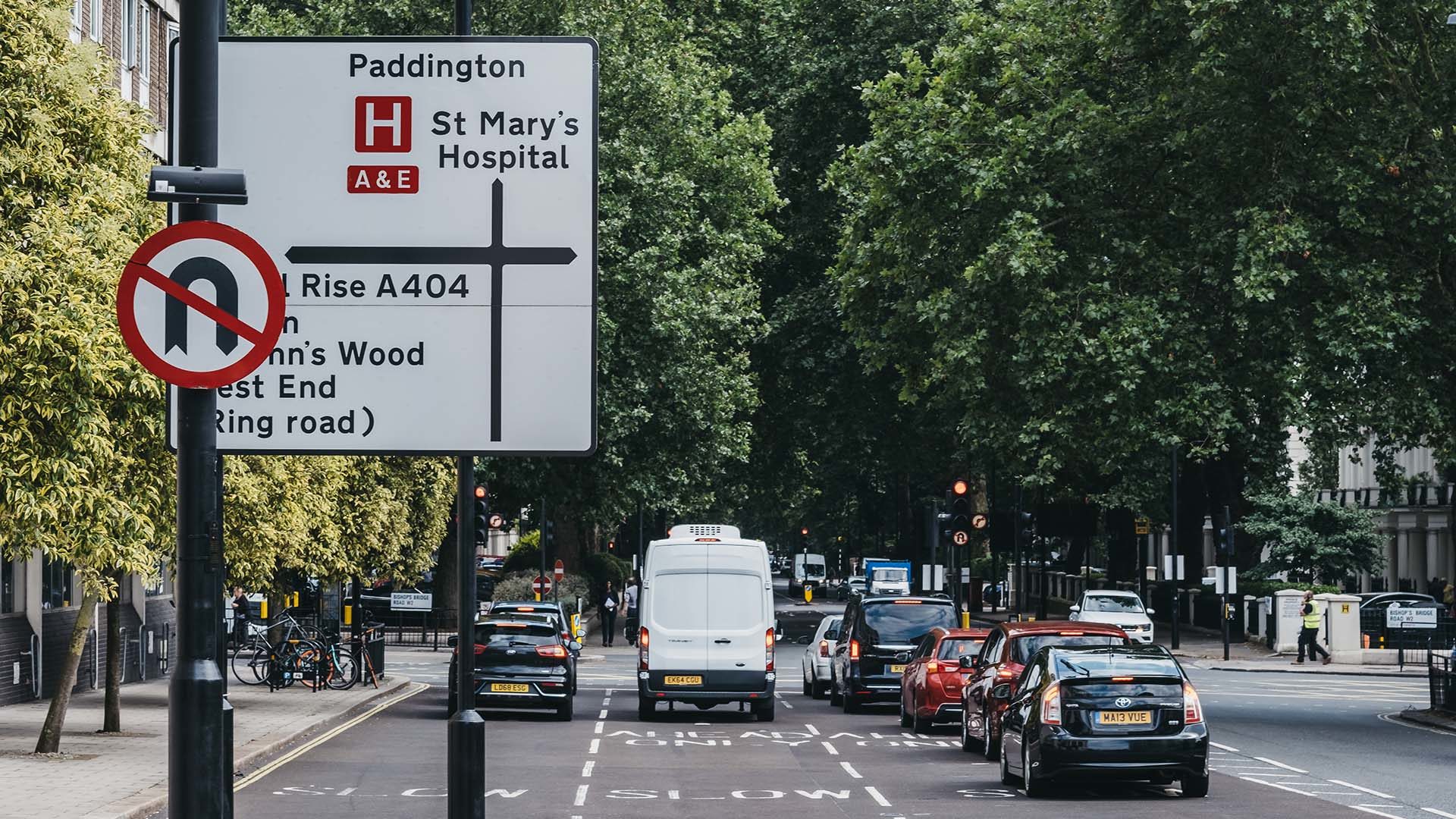
Just recently a driver was arrested after making an illegal U-turn on the M4. Obviously, such a manoeuvre is madness on a motorway, but the humble U-turn can also be difficult and dangerous on regular roads.
As its name suggests, a U-turn involves making a 180-degree turn in the road. In one complete manoeuvre, the car ends up facing in the opposite direction. A U-turn is not to be confused with a three-point turn, which involves reversing.
Although it is legal to make a U-turn in the UK, there are places and situations where the manoeuvre is prohibited. Get it wrong and you risk three points on your driving licence and a fine. Worse, you could endanger the lives of other road users.
When is making a U-turn illegal?
The most obvious indication that U-turns are prohibited is the ‘No U-turn’ sign. This is a red outer circle surrounding a black ‘U’ with a line through it.
However, as this page on the Transport for London website explains, you should also pay attention to signs showing the direction you must take.
A U-turn is also considered illegal if one of the following happens:
- You cross a kerb
- You cross double white lines in the centre of the road
- You are driving on a one-way street

How to make a U-turn
A U-turn should be a last resort, especially in busy urban areas. U-turns are often performed when a driver misses a turn, so they tend to be the result of a rushed decision, with less thought for road safety.
If in doubt, pull up on the side of the road, consider your options, then make an informed choice. If in doubt, turn left or right at the next junction and obey the traffic laws before re-entering the road in the opposite direction.
Consider the following:
- Is it safe and legal to make a U-turn?
- Will I endanger or inconvenience other road users?
- Is the road wide enough to complete the manoeuvre in one turn?
- Do you have clear visibility of the road?
If you must perform a U-turn, pull up on the left-hand side of the road. A U-turn will take a few seconds to complete, so make sure the oncoming traffic is clear before starting the manoeuvre.
When it’s safe to do so, check your mirrors, indicate right, check your mirrors again (including any blind spots), then make the turn. Cancel the indicator and check the rear-view mirror when the manoeuvre is complete.
Keep an eye open for motorcyclists, cyclists and pedestrians, as they might not be visible in your mirrors. There’s also a chance they won’t be aware you are making a U-turn.
If you want to U-turn on a road with a designated filter lane on the right-hand side, turn on your indicator and wait for the oncoming traffic to clear. Don’t rush it – make sure you have enough space to complete manoeuvre without stopping or having to reverse.
Pay attention to the traffic lights, too – the filter lane might not work in tandem with the lanes on your left.
ALSO READ:
How and when to use your car’s hazard warning lights